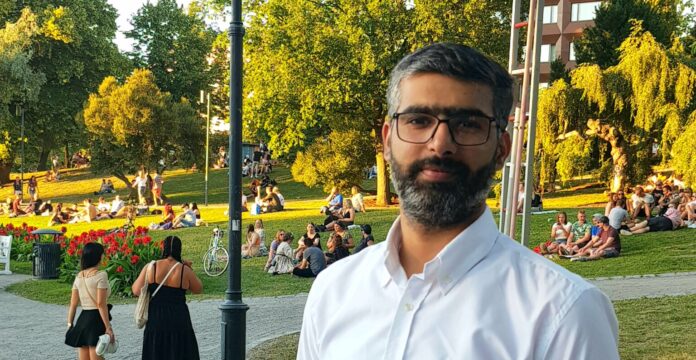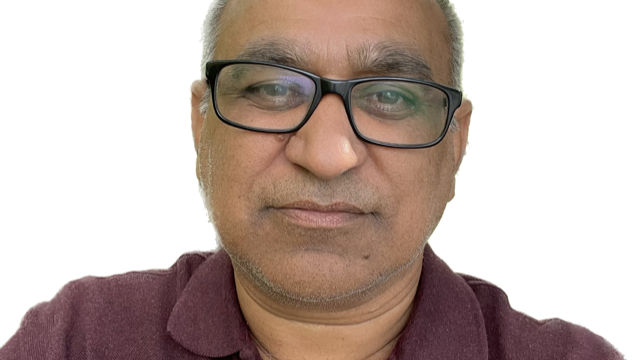Webinar speakers from top left: Mari K. Niemi, Orna Ben Lulu, Jukka Niva, Reijo Ruokanen, Suvi Korhonen, Heidi Kuusniemi, Turo Uskali, Kimmo Rautanen, Klas Backholm, Tanja Sihvonen and Mikko Ranta.
Almost 60 journalists, communicators, and media and technology scholars came together last Friday to talk about the future of journalism. The title of the webinar asked, poignantly, whether the introduction of new tech was mere hype or a true lifesaver. Here’s what we learned.
The online event featured three brief presentations from scholars, followed by a panel discussion by practicing journalists. First up were Professor Tanja Sihvonen and Assistant Professor Mikko Ranta, both of University of Vaasa. They gave a talk on blockchain technology and its potential in journalism. It could be used to monetize journalism while bypassing ad tech intermediaries, Tanja explained, but also to encrypt and verify communications in dangerous environments. While the tech itself is complicated, journalists themselves don’t need to understand it all.
– I think it’s better if you don’t know too much, you’ll be able to experiment more freely. If you know the technical details, you’ll only start seeing problems everywhere. It’s enough if you understand blockchain is a way to ensure data is not being tampered with, Mikko encouraged.
What makes youth trust journalism?
Next, Researcher Kimmo Rautanen and University Lecturer Klas Backholm, both of Åbo Akademi, presented their research on young audiences. After having interviewed tens of Finnish and Swedish youth about their trust in journalism, they came to a conclusion: the kids are alright.
– What they want from journalism is fairly conventional. They want transparency, professionalism and inclusiveness. They are also very brand aware and pay a lot of attention to the platform, the organisation and even the individual journalist, Kimmo summarized.
However, the research does provide a caveat. The youth expects journalism “to find them” – this means journalism needs to follow its audience to new media platforms, rather than expect the new generation to surf back to time-tested websites.
Satellite journalism on the launch pad
Lastly, Professor Heidi Kuusniemi, of University of Vaasa, and Associate Professor Turo Uskali, of the University of Jyväskylä, spoke about satellites in journalism. As satellite technology has become more affordable, it has allowed journalists to conduct investigations unlike anything before. Much of the potential is still untapped.
– Satellite journalism today mostly focuses on foreign news, but satellites could easily give new perspective to domestic news as well, Turo encouraged.
Not only that, most reporters still lack the basic skills required to make use of otherwise freely accessible satellite data. In a bid to proliferate these skills, the University of Jyväskylä has launched an online training resource (in Finnish) to help journalists get started with satellite (and drone) journalism.
A race against bad-faith actors
The presentations were followed with a lively discussion panel, hosted by Research Director Mari K. Niemi, of E2 Research. Here are some key takeaways from each panelist.
Orna Ben Lulu is the Editor in Chief of Rare, a journalism venture by youth, for youth. Under her leadership, Rare publishes exclusively on social media: TikTok, Instagram, and most recently Twitter. Kimmo and Klas’ research seems to resonate with Orna’s understanding of the field, as she highlighted the need to branch out to wherever the audiences go.
– I wish more journalistic media became interested in virtual reality. VR can influence people deeply, and I get shivers when I think what could happen if journalism doesn’t get there before propagandists, Orna warned.
Suvi Korhonen is a journalist working for many tech-focused publications, including IT-magazines like Tivi and Mikrobitti. She commented on the idea to use blockchain to implement micropayment systems as a way of monetizing journalism, as proposed in Tanja and Mikko’s presentation.
– I know audiences sometimes suggest micropayment systems, but so far I don’t know if anyone in Finland applied them successfully. However, I’m sure the technology will play an important role in countering deepfakes, which are becoming a common nuisance, Suvi predicted.
Circling back to basics
Reijo Ruokanen is the Editor in Chief of a number of magazines, perhaps most influentially of the technology-focused Tekniikan Maailma. The magazine has an exceptional budget for purchasing new tech for testing, but the publication’s editorial practices remain cautious.
– If we publish something, we need to be sure it’s correct. I would be very cautious of journalists drawing their own conclusions based on satellite images, we rarely have the competence, Reijo explained.
However: new technologies can still help journalists with their job. When asked, Reijo confided that his favourite piece of tech remains his smartphone, which allows him to connect with the world 24/7 and even work from a remote log cabin (as he did at the time).
Jukka Niva, the Head of the Finnish Broadcasting Company’s News Lab, sought to answer the webinar’s titular question: Is the hype around new tech just that – hype? Jukka’s answer is a resounding ‘no’.
– Every bit of new technology can be used to produce the ‘hard core’ of news journalism: to ask how we are being governed and how ‘the other half’ lives. When technologies are not treated as gadgets for their own sake, that’s when things get interesting, he concluded.
The “Uudet teknologiat tulevat! Turhaa hypeä vai journalismin pelastusrengas?” webinar was arranged as part of the Disrupting the Media Scene project. It aims to support Finnish media in adapting to, and making full use of new technologies. The project is funded by Helsingin Sanomat Foundation. You can follow the project on Twitter, at @Media_Futures




